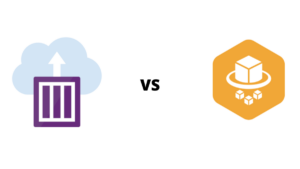Posts Tagged ‘serverless computing’
AWS Fargate vs. Azure Containers
AWS Fargate and Azure Containers make it easier for developers to focus on building applications instead of managing IT infrastructures. Containers operate as independent runtime environments with their own configurations, libraries, and frameworks. These features make software more dependable because containers do not rely on specific operating systems. Anyone can access and use them regardless…
Read MoreContainers vs. Serverless Computing
The five key differences between containerization and serverless computing: Cost — You must pay for serverless environments hosted in the cloud, whereas a container can be set up for free. However, containers have ongoing management costs, which can be expensive — even if no one is using the application. Longevity – Serverless functions live short, which also provide agility and flexibility. Containers…
Read MoreIntegration: Airbrake and Iron.io
Integrating Airbrake With Iron.io for Enhanced Performance Monitoring If you use Airbrake for cloud-based error and bug reporting, you know how valuable this service is for web development. Airbrake provides a broad range of performance management insights for various web apps, letting developers identify and fix technical issues in a speedier timeframe. But did you…
Read MoreIntegration: Twilio and Iron.io
How Integrating Twilio with Iron.io Improves Scheduling Nearly 150,000 businesses use Twilio to send and receive phone calls, texts, and other messages. (It’s one of the most popular communications platforms in the world.) Twilio has limitations, however, such as no scheduling feature for calls and texts. IronWorker lets you schedule messages on Twilio for more effective communication.…
Read MoreBuilding a Serverless Web App: Why You Should Consider the Monolith
Overview: The differences between serverless microservices and monolithic approaches to software development. Serverless Computing Monolith Applications Monolithic Limitations Serverless Web Apps and Monoliths When it comes to scaling up IT operations, it can be difficult to do within the limitations of software development applications like Monolith. Transitioning from a traditional monolithic to a more modern serverless microservices approach can be one of the…
Read MoreWhat is AWS Lambda
In the past few years, Amazon Web Services and other public cloud providers have continued to expand in both size and number of offerings, trying to win users through benefits such as convenience, flexibility, and cost-effectiveness. AWS Lambda is an essential part of the Amazon Web Services toolkit: it’s a serverless computing solution that can run code…
Read More

